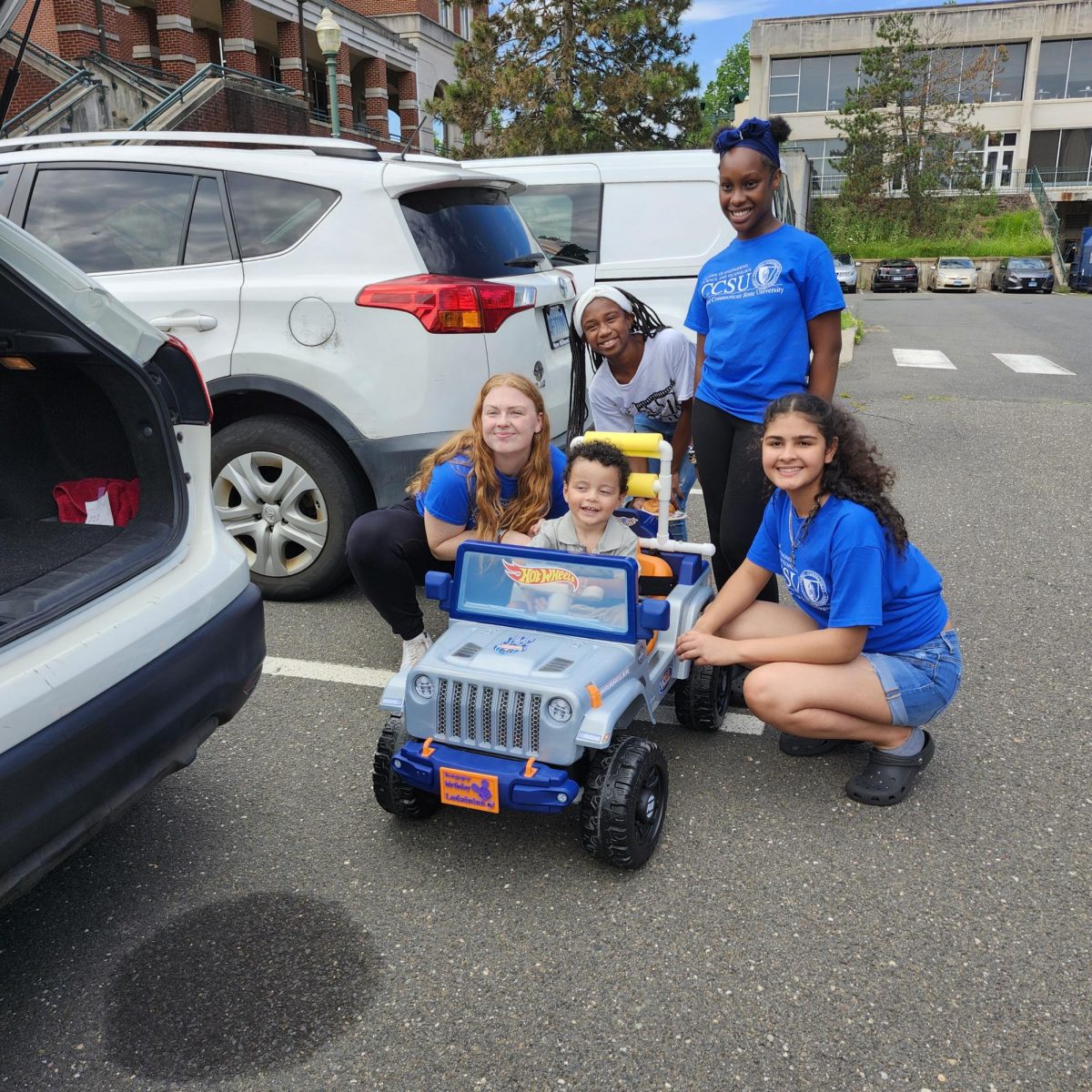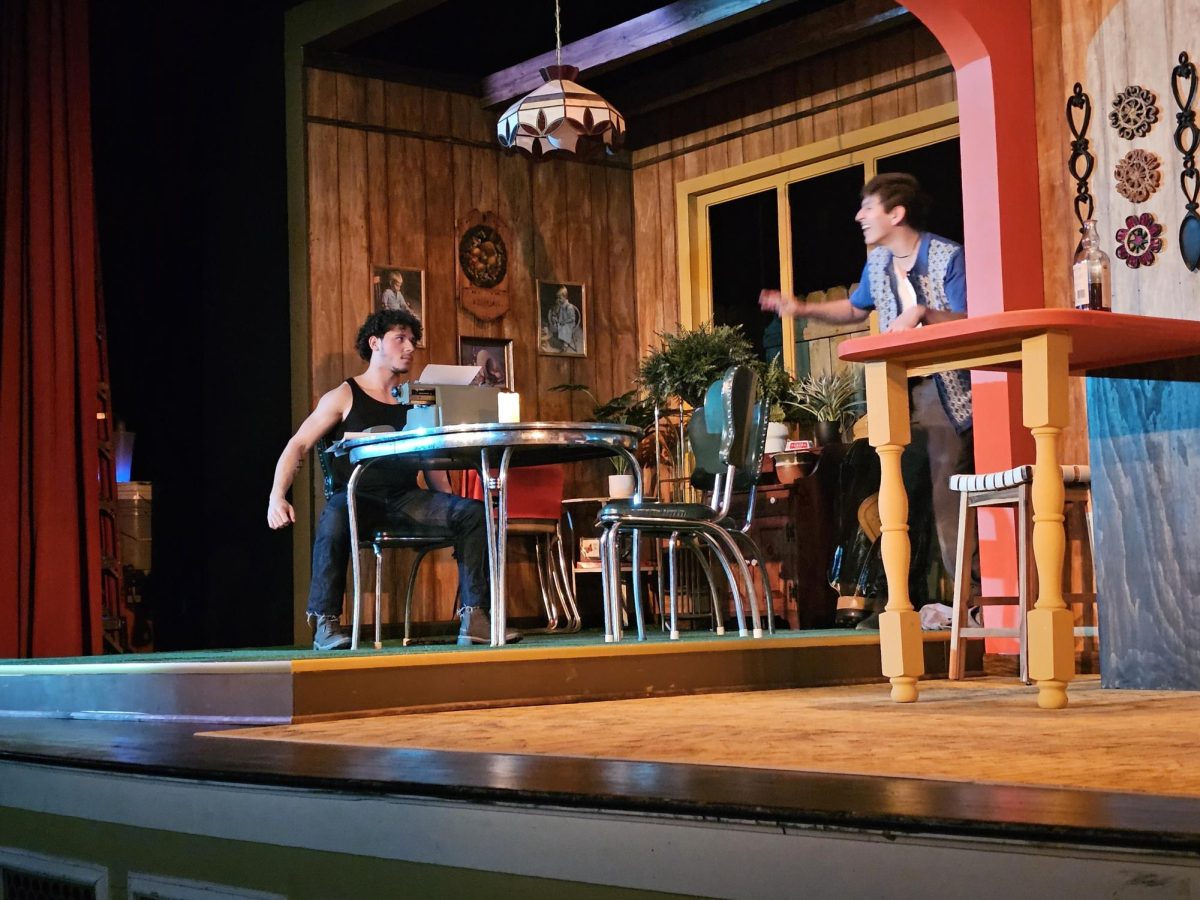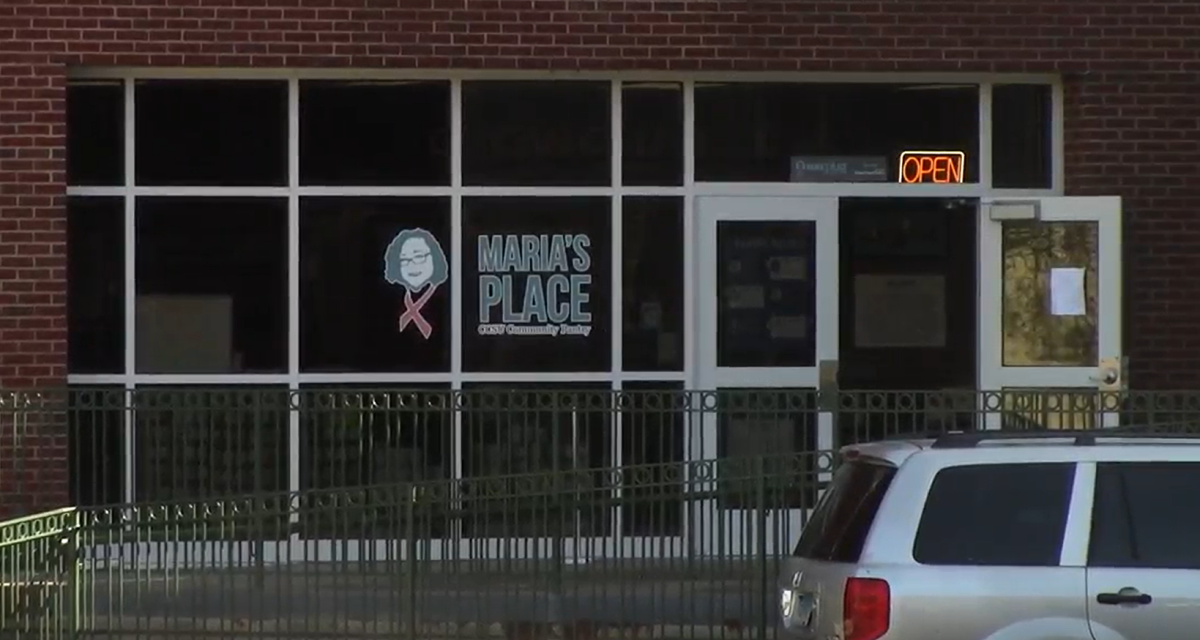
By Samantha Fournier
In thick jagged white writing the words “Devil’s Chariot” appeared on the side of the smooth black carbon fiber exterior of the Human Powered Vehicle Club’s vehicle as club members drove it around the Stafford Motor Speedway last weekend for the American Society of Mechanical Engineers East vehicle challenge.
This year, CCSU hosted the ASME East human powered vehicle challenge, bringing 28 teams from around the world. Some of these teams came from as far away as Venezuela and Canada to CCSU’s campus to race their human powered vehicles in this three day competition.
The event started off with a design presentation and safety check on May 7 around Copernicus Hall.
“Each vehicle had to be able turn within a 25 foot radius,” said CCSU’s Human Powered Vehicle club president Ben Haase, adding that each vehicle had to get up to 15 miles per hour at 100 feet and had to be able to stop within 20 feet.
The event then moved to the Stafford Motor Speedway on Saturday and Sunday for drag, utility, and endurance races. Overall CCSU’s three-wheel design came in 9th in the utility class.
Racers for this year were club participants Johnny Kassay, Joshua Treadwell, Charles Hart and Shayna Bartell. Over the past year these students, as well as Haase and other students have worked outside of class at nights, on the weekends, and some holidays to complete this vehicle for the ASME East HPV Challenge.
Since 2004 students have been building vehicles with club advisor and technology professor Dr. David Sianez. In 2008 the human powered hehicle group became an official club.
“Enough of us got involved that we wanted to help it grow,” said club president Haase of the club’s start.
“[The] purpose of the club is to apply what they learn in the classroom – application based learning. We try to expand the students’ experiences,” said Sianez of the club’s purpose.
Throughout the year students of all majors participate in the planning and building of the vehicle. They first apply their concept to a computer generated model and then use that to create the vehicle, which includes making a series of molds for the exterior and building the body. Altogether Sianez estimates students put in 1,200 to 1,500 hours worth of work on the vehicle.
While the team wanted nothing more than their hard work to pay off at the challenge, the club interaction and personal progress is important.
“For me the idea of winning has nothing to do with it,” added Sianez. “The idea of performing to the best of your abilities has everything to do with it.”
The Human Powered Vehicle club is already planning for next year’s two-wheel chrome exterior vehicle to race at the Indianapolis Motor Speedway next spring.







